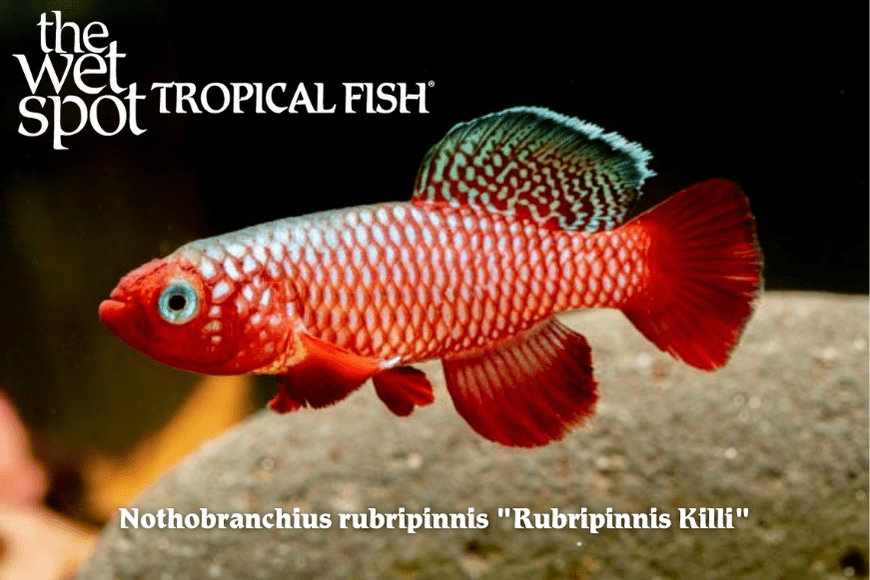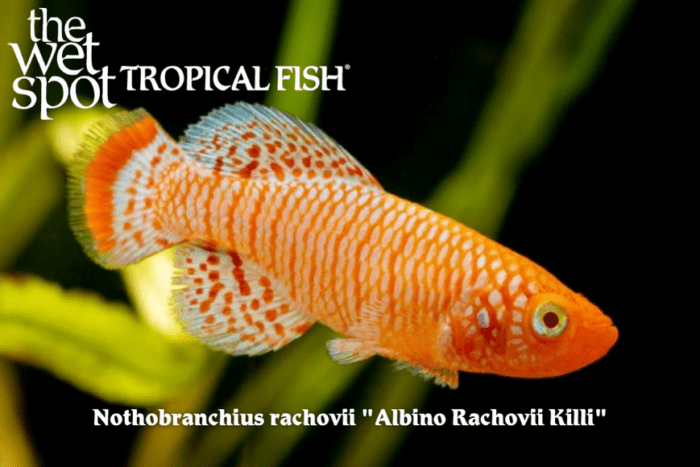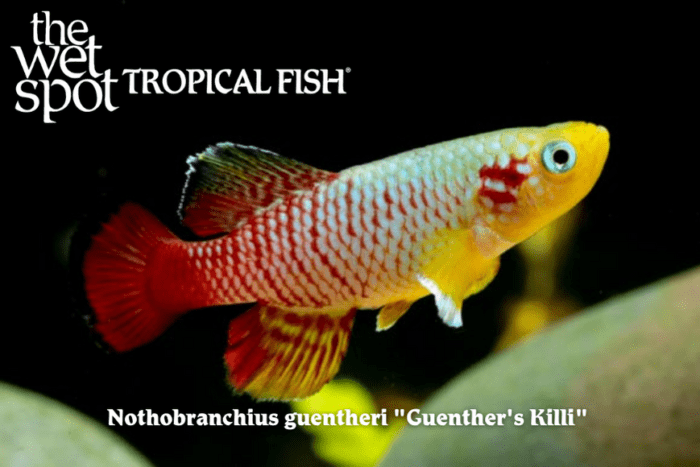Killi ‘Em With Kindness
Life is a competition. With limited resources, basics like food, shelter, and mates are hard-won. Most of us won’t experience this scarcity, our competitive instincts transferred to more nebulous concepts, and the same can be said of our well-cared-for pets. They’ll never know the true stresses of life in the wild, but aquarists are all too familiar with the fact that it doesn’t always tamp down their wild behaviors.
In the case of Killifish in the genus Nothobranchius, the scarcity they experience in the wild, above all, is time. From the ephemeral pools of East Africa, dormant eggs in the substrate are awakened by summer monsoons, and the emerging juveniles are on a tight schedule to mature and mate. Male Notho Killis are exquisite, eye-catching creatures, with their bright colors and striking patterns serving as a beacon to their plain female counterparts. Not enough to simply look the part, males are in competition with one another and must defend spawning territories, leaving the most aggressive fish to pass along their genes before their habitats dry up, and progeny are left behind in the deep sleep of diapause until next year’s rains.
In aquaria, their habitats are not liable to dry out, but males remain aggressive toward one another. With forward-thinking on our side, we can preempt this behavioral trait by keeping only single pairs in smaller tanks, harems with a single male and multiple females in mid-sized tanks, or groups with a heavy females bias in large aquaria with lots of well-defined territories. Notho Killi’s natural habitats are characterized by dense vegetation, and they do best in planted aquascapes with other areas of cover from furnishings like wood, rocks, and caves. In captivity, their lifespans are extended to about a year, but breeding is easily stimulated. Pairs may be moved to shallow spawning tanks with a thick layer of mossy substrate. Once eggs are deposited, moss may be removed, drained, and stored in a plastic bag for about 4 months. Then, they may be resubmerged in water to hatch in their own tank, and once fry reach a suitable size, they may be moved into larger aquaria. While best maintained in species-only setups, they may be kept in community aquaria with tiny tankmates like Danios, Tetras, Rainbowfish, and Catfish. Feeding mostly on small invertebrates in the wild, they should be fed mostly items like Daphnia, Artemia, and chopped bloodworm, supplemented by small flake. Natural water conditions ranging quite a bit, Notho Killis are not particularly sensitive and may be kept in waters with temperatures between 68°F and 80°F, pH of 6.0 to 7.5, and hardness up to 179 ppm.
Found in flooded rice fields of Tanzania, Nothobranchius rubripinnis males max out at 1.8 inches and exhibit lipstick red bodies covered in shiny silver-blue scales, blue edges along their red fins, and golden patterning on their dorsal fin.

Scientific Name:
Nothobranchius rubripinnis
Common Name:
Rubripinnis Killi
Temperature:
68° – 80° / 6.0 to 7.5 pH
Native Location:
The ephemeral pools of East Africa
Preferred Diet:
Omnivore
Ranging from the Zambezi River to Kruger National Park in South Africa, Nothobranchius rachovii males reach just over 2 inches in length and exhibit bright red-orange bodies speckled in neon blue scales down their sides, and bright blue and red patterned fins.
Scientific Name:
Nothobranchius rachovii
Common Name:
Albino Rachovii Killi
Temperature:
68° – 80° / 6.0 to 7.5 pH
Native Location:
Ranging from the Zambezi River to Kruger National Park in SOuth Africa
Preferred Diet:
Omnivore

Known only to the seasonal pools on the island of Zanzibar Nothobranchius guentheri males reach about 2 inches and sport yellow heads, red cheeks, blue and red scaling along their sides, and bright red fins.
Competition among modern humans can be boiled down to disagreements…innumerable disagreements varying in importance, but equally stressful to partake in. Just trust that in the long run, only the best ideas stand up to scrutiny. So, let’s Killi each other with kindness in the meantime.

Scientific Name:
Nothobranchius guentheri
Common Name:
Guenther’s Killi
Temperature:
68° – 80° / 6.0 to 7.5 pH
Native Location:
The seasonal pools on the island of Zanzibar
Preferred Diet:
Omnivore
